The addition of sulfites is one of the wine world’s most confusing, controversial, and misconstrued subjects. For starters, there is no evidence they cause headaches. What’s more, they have been added to help stabilize wine for centuries. Plus, sulfites are a naturally occurring byproduct of fermentation, meaning that all wine will contain some level of sulfites, whether or not the winemaker chooses to add them during the winemaking process.
Used to stall oxidation and fight off bacteria, sulfites (referring to sulfur dioxide, or SO2) can extend the shelf life of a bottle. However, SO2 also changes (many say diminishes) the flavor profile of the wine, often preventing it from expressing the subtleties and distinctions of its terroir. It can also hinder a wine’s metamorphosis after opening, the proverbial “development in the glass.” In other words, what the final product gains in stability, it loses in vitality; what it gains in polish, it loses in personality.
While it’s true that some people have sulfite allergies, they are much less prevalent than it might seem. Though some of our customers complain of “red wine headaches,” these are likely caused by other, not-yet-determined factors–perhaps tannins or histamines. In fact, red wines have significantly fewer sulfites than white wines; that’s because the tannins in red wine help serve the role of antioxidant and protect the wine from harm, making the addition of sulfites somewhat superfluous. (For more about sulfites and natural wines, please visit our Guide to Natural Wines.)
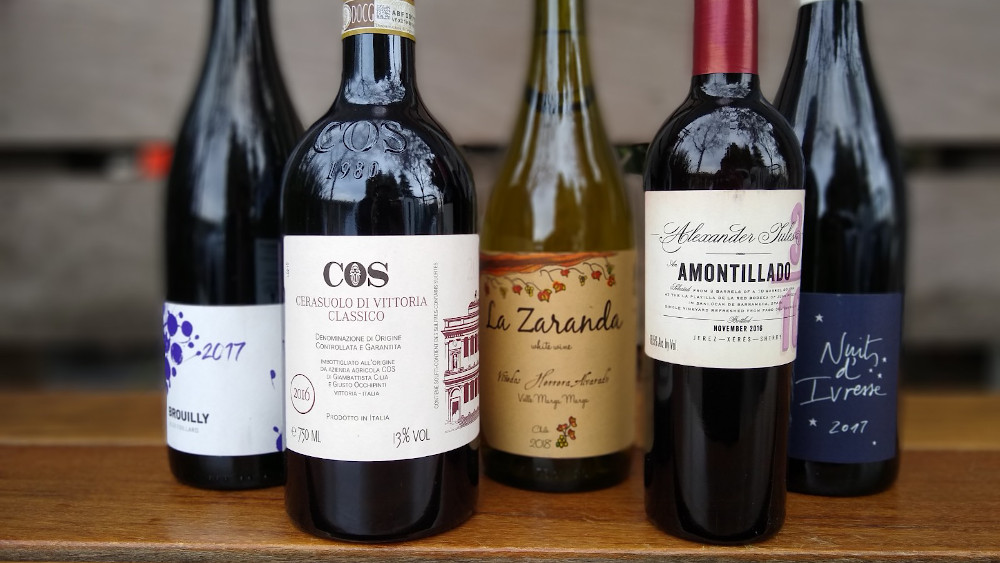
Nonetheless, be it for health concerns or taste preferences, Paul Marcus Wines offers a wide range of low-sulfite wines for your enjoyment. Below are five noteworthy selections.
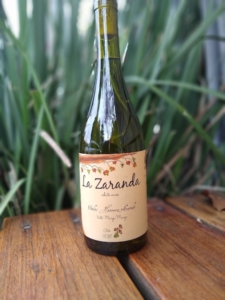 2018 Herrera Alvarado “La Zaranda” Sauvignon Blanc ($30)
2018 Herrera Alvarado “La Zaranda” Sauvignon Blanc ($30)
Arturo Herrera and Carolina Alvarado have been making wines in Chile’s Marga Marga Valley since 2003, considered among the pioneers of Chile’s natural wine scene. Their sauvignon blanc sees no additional SO2, allowing more savory, oxidative flavors to shine through while still retaining the zip and energy expected from this varietal.
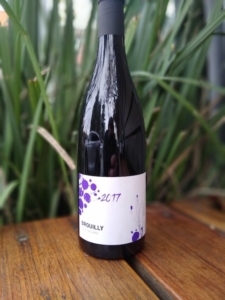 2017 Alex Foillard Brouilly ($48)
2017 Alex Foillard Brouilly ($48)
Foillard’s father, Jean, was part of Beaujolais’ “Gang of Four” along with Marcel Lapierre, Guy Breton, and Jean-Paul Thévenet–each considered trailblazers in low-intervention, sustainable, natural-leaning winemaking techniques. Although 2017 was only Alex Foillard’s second harvest, he is already making a name for himself. His Brouilly is an absolute stunner, boasting gorgeous aromatics, vibrant minerality, bright red and blue fruit, and a texture of velvet. Foillard’s wines, as befitting the family name, are unfiltered, unfined, and undergo whole-cluster fermentation, and he only uses a tiny amount of sulfur (if that) for bottling.
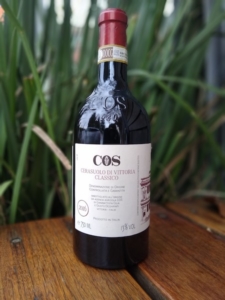 2016 COS Cerasuolo di Vittoria ($32)
2016 COS Cerasuolo di Vittoria ($32)
This certified-organic Sicilian beauty is a blend of 60 percent nero d’avola and 40 percent frappato–the nero providing dark fruit and spice, the frappato offering floral lift. Fermented in concrete with indigenous yeast and aged in large Slovenian oak, this is a balanced, versatile wine that coaxes considerable depth and energy from its medium body. Founded by Giusto Occhipinti and his two buddies around 40 years ago, COS long ago adopted biodynamic principles–they’ve never used chemicals or synthetics in their vineyards–and Occhipinti believes in only a minimal addition of SO2 at the time of bottling.
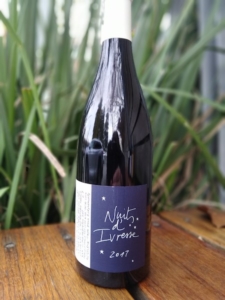 2017 Breton “Nuits d’Ivresse” Bourgueil ($34)
2017 Breton “Nuits d’Ivresse” Bourgueil ($34)
Loire Valley legends Catherine and Pierre Breton have been certified organic for nearly 30 years. Although they make about a dozen cuvées of cabernet franc, the “Nuits d’Ivresse” (“Drunken Nights”) is the only one that is bottled without even a hint of added sulfur. Yes, you get a taste of that “barnyard funk” typical of many unsulfured wines, but it is merely one element of this generous, complex, and fresh cab franc. Made with fruit from 50-year-old vines and aged in barrel for a year, it will certainly help wash down a plate of lamb chops in fine fashion.
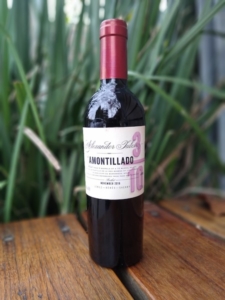 Alexander Jules Amontillado 3/10 ($33)
Alexander Jules Amontillado 3/10 ($33)
Alex Russan has been releasing his Alexander Jules line of barrel-selected sherry since 2012. As he himself points out, “Due to sherry’s unique aging processes, very little is actually necessary to ensure their stability.” Therefore, he never adds sulfur to any of his releases, which undergo only the most minimal filtration. The Amontillado 3/10 has an average age of 18 years, and it delivers a combination of saline tang (from its biological aging under the flor) and richer, though still gentle caramelized notes (from its oxidative aging).
For more information about low-sulfite wines, come visit us at Paul Marcus Wines. We’ll be happy to help you find a bottle to your liking.
Why We Love: Rosato Tutto Il Giorno
UncategorizedThere is something undeniably satisfying about a chilly glass of Provençal rosé on a warm summer’s evening (or, perhaps, afternoon). This style of rosé has become enormously popular around the world, and with good reason–gently fruity and crisp on the finish, these pale, refreshing wines are incredibly easy to enjoy, especially when temperatures are on the rise and light snacks are on the plate.
While France still dominates the pink market, wine drinkers in the U.S. have been exploring Italy’s dizzying array of rosato wines more than ever before. If you think that rosé is only suitable for porches and picnics, think again. Paul Marcus Wines offers a range of captivating, food-craving rosatos that will absolutely shine a tavola.
Next we move to Piemonte, where the majestic nebbiolo grape reigns supreme. The nebbiolo of Alto Piemonte, in the northern part of the region, is usually more etched and mineral-driven, with softer tannins, than the nebbiolo found in the more-famous Langhe area two hours to the south. Producers and consumers alike are quickly discovering how well suited the nebbiolo of Alto Piemonte is to rosato.
Finally, we have Nervi’s Il Rosato, which falls stylistically somewhere between the first two. The oldest estate in the Alto Piemonte DOCG of Gattinara, Nervi was recently purchased by Barolo superstar Roberto Conterno, and they decided to use some of their top vines for this delightful rosato. Malolactic fermentation and a spell of lees aging give this wine a bit of texture without sacrificing any of its zest. For a different twist on Piemonte rosato, try the Vigneti Massa Rosato ‘Terra Libertà’, an herbaceous blend of barbera, cortese, and freisa that hails from the Colli Tortonesi in Piemonte’s southeastern hills.
Summer might be creeping to a close, but these versatile, food-friendly rosatos have year-round appeal. Visit or call us at Paul Marcus Wines to begin your discovery of Italian pinks. Buon viaggio!
Producer Profile: Two to Watch in Burgundy
Domaine Charleux, Domaine DurocheI’ve always had a particular fondness for red Burgundy. At their best, these wines proudly display their terroir, that distinct sense of place; they boast a balanced mouth feel and are structured yet elegant. At Paul Marcus Wines, we have always taken pride in our extensive selection of Burgundy, and that remains true to this day.
Lately, I’ve been rather impressed by a couple of noteworthy producers who happen to lie at opposite ends of the Côte d’Or–and opposite sides of the price spectrum: Domaine Duroché in the far north of the Côte de Nuits and Domaine Maurice Charleux et Fils at the southern tip of the Côte de Beaune.
Photo of Domaine Duroché via Polaner Selections
Whenever you hear anything about Domaine Duroché, you are bound to hear the words “rising star.” Pierre Duroché joined the domaine in 2003 and took the reins of the operation two years later. Since then, he has turned the domaine around, bringing a new energy and focus to this esteemed Gevrey-Chambertin house that’s been around since 1933.
While Duroché’s top-level cuvees sell for upward of $500, their village-level wine still represents somewhat of a bargain. The 2017 Domaine Duroché Gevrey-Chambertin ($78) has understated power and appealing elegance, revealing the earthy, mineral Gevrey flavors that are so typical of the terroir. Though it will be sure to age gracefully, it can also be enjoyed young.
About an hour south of Gevrey–just to the southwest of Santenay, but still in the Côte de Beaune–are the three small villages of Maranges. The hillside commune of Dezize-lès-Maranges is home to the wines of Domaine Charleux.
Many of you are already familiar with these value-driven Burgundies; they have been a staple in our shop for many vintages, and are perhaps the most consistent Burgundies available in that price range. In general, the wines of Maranges are medium-bodied with just enough acidity to make them appropriate for near-term aging. The soils are clay and limestone, and most of the vineyard exposure is south to southwest.
The 2018 Maranges Vieilles Vignes ($29) is produced from vines that are more than 80 years old and offers admirable concentration and length. Somewhat dark-fruited, it exemplifies the liveliness of the 2018 vintage.
From the warmer 2017 vintage comes the 1er Cru Maranges ‘Les Clos Roussots’ ($33). The vineyards here have south and southeast exposure and are mostly blue-clay soils with some limestone. This red-fruited wine is forward and easy-drinking, with noticeable complexity in the raspberry-like finish.
We also have a few bottles left of the 2016 1er Cru ‘Le Clos des Rois’ ($30). These south- and southwest-facing vineyards contain a greater proportion of limestone, which gives this bottle ample structure and complexity. This wine has red-fruit aromas along with floral and spicy notes–simply delicious.
Of course, Paul Marcus Wines has dozens more notable Burgundy producers from which to choose. Let us help you explore the many delights of Burgundy. See you at the shop.
– Paul Marcus
Why We Love: Riesling
RieslingIn terms of stylistic variety, aging potential, and the ability to reflect terroir, nothing can touch riesling. The riesling grape does best in marginal climates, needing a cool, long growing season in order to achieve phenolic ripeness. Put another way, the best wines made from riesling, like the most interesting people, are usually a product of struggle.
Hillside vineyards in a small German town
Making riesling in its country of origin (Germany) can be a bit of a quixotic endeavor–you are at the northern limit of where grapes can even achieve ripeness. You are farming slate slopes that are so steep that everything has to be done painstakingly by hand. Add factors like climate change, and it’s a wonder that any wine can be made at all. In fact, 2019 marked the first German vintage that was too warm to produce eiswein, a style of dessert wine that relies on the grapes freezing on the vine.
One of the most remarkable things about riesling is the diverse array of styles that it can produce. German rieslings, especially those from the Mosel, tend to have a delicate, filigreed character to them. Typically off-dry and low in alcohol, these wines achieve an ethereal balance between sweetness and acid.
If a Mosel riesling is a ballet dancer, Austrian rieslings are rock climbers–muscular, but lean and chiseled. They are dry and mineral, and while typically fuller-bodied than their German counterparts, still offer a degree of precision that many wines lack. Alsatian rieslings are typically dry, but full-bodied and rich with extract. For Australian rieslings, think bitter pith and zest instead of fleshy fruit, along with, typically, a preponderance of petrol.
Below are a few rieslings worth exploring:
2014 Joh. Jos. Prüm Graacher Himmelreich Spätlese
Featuring steep, southwest-facing Devonian slate soils, the Graacher Himmelreich site in the Mosel is known for the distinctive smoky aroma it imparts.
2013 Dönnhoff Nahe Spätlese Oberhäuser Brücke
Nahe’s smallest single vineyard (1.1 ha) is a monopole located near the Nahe River, which mitigates the temperature and leads to the longest ripening of any of the Dönnhoff wines. Grey slate bedrock with loam and volcanic elements lend a persistent minerality to the wine.
2017 Tessier Winery – Zabala Vineyard
Stylistically in line with Australian riesling, this wine, from the Arroyo Seco AVA in Monterey County, shows lime zest and pith as well as a stony minerality on the palate.
Please stop by Paul Marcus Wines to learn more about this wonderfully expressive grape.
– Layla Khabiri
Producer Profile: Domaine Olga Raffault
Olga RaffaultThe fertile French terrain situated at the confluence of the Loire and the Vienne has been producing wine for hundreds of years. Established in 1937, the Chinon AOC lies on the south bank of the Loire, bisected by the Vienne in the westernmost reaches of Touraine. Chinon is almost exclusively the province of cabernet franc, a grape that seems to thrive in the region’s terroir.
Two offerings from Domaine Olga Raffault
Domaine Olga Raffault is perched on the bucolic triangle of land known as the Véron, between the two rivers just east of where they converge. The Raffault family has been making wine in Chinon for five generations. Tragedy struck in 1947 when Olga’s husband and partner, Pierre, died suddenly, leaving Olga and her two children to fend for themselves.
According to family legend, it was one of the estate’s employees, Ernest Zenninger, who vowed to the dying Pierre he’d look after his family. A repentant former German soldier, Zenninger was grateful for the kindness the Raffaults had shown him and would from that point on dedicate his life to the family business. Zenninger became the estate’s winemaker, mentoring Olga’s son Jean along the way, and together Jean and Ernest would help solidify Olga Raffault’s status as a Loire Valley legend.
Image sourced from olga-raffault.com
Today, the venerable house is operated by Olga’s granddaughter Sylvie and her husband, Eric de la Vigerie, with able assistance from their son, Arnaud. They have recently converted to organic farming in their vineyards, where they pick all the grapes by hand, using native yeasts for fermentation. Working with vines in some of Chinon’s most desirable terrain, Domaine Olga Raffault remains one of the appellation’s benchmark producers.
Raffault’s flagship bottling is the Les Picasses cuvee, 100 percent cabernet franc from a south-facing slope on the north bank of the Vienne. The vines are more than 50 years old and feed off a mixture of alluvial clay and chalky limestone. After fermentation in stainless steel, it’s aged for roughly 18 months in relatively large barrels and then aged in tank and bottle for a few more years before release.
The resulting wine is incredibly balanced and complex–ample-bodied, rich with dark fruit and plush tannins, earthy but with plenty of acidity and a mineral edge. Think cassoulet, braised oxtails, roasted lamb, or similarly robust fare. Next time you’re considering a Bordeaux, reach for this instead. At less than $40 a bottle, Raffault’s Les Picasses is still one of the Loire’s great value plays.
I wrote earlier that Chinon is almost exclusively the province of cabernet franc, and while that’s true, there is a negligible amount of chenin blanc planted there. Thankfully, one of Raffault’s 24 hectares of vineyards is dedicated to chenin, the plot of land that produces the wonderful Champ-Chenin cuvee.
In its youth, this wine definitely plays hard to get; there’s just a tantalizing hint of the pome-fruit fleshiness that has yet to fully emerge. But you can tell it’s coming. Even with the fruit still somewhat subdued, there’s enough depth, vitality, and sophistication to satisfy even the most impatient among us. No malo or wood here, just some lees-aging to give it a bit of texture. Cellar-worthy, indeed.
Both the 2014 Les Picasses and the 2018 Champ-Chenin are currently available at Paul Marcus Wines. They are drinking beautifully now, but their best years are still ahead of them. If you’re interested in Chinon wines, you should probably get to know Domaine Olga Raffault.
Regional Roundup: Barbaresco
BarbarescoSeveral times a day, a customer will come in and ask, “Where do I find Barolo?” And with good reason–Barolo produces some of the world’s greatest wines. These customers have certainly come to the right place, because we do have a large selection of exceptional Baroli.
Rarely, though, does anyone ask to be directed toward our fabulous Barbaresco section. Why is this? For starters, Barbaresco is smaller than Barolo, and far less of it is imported to the U.S. Plus, it hasn’t received as much attention from the public or from wine journalists. This is unfortunate, because Barbaresco can be every bit as marvelous as Barolo, with the added advantages of earlier drinkability and much lower price points.
The Estate of Produttori del Barbaresco, a favorite within the shop.
Barolo and Barbaresco come from the hills of southern Piedmont in a region called the Langhe. Both must be produced using 100 percent nebbiolo. Much like pinot noir, nebbiolo produces elegantly textured, lighter-colored wines that nevertheless have tremendous depth and intensity. Its aromatics are as beautiful and complex as they come, and with incredible contrast. (Famously, descriptions such as “tar and violets” or “rose petals and truffles“ are used in attempts to depict these wines.) They also deliver gorgeous cherry fruit, with notes of licorice and leather.
Just like pinot and sangiovese, nebbiolo can thrive in a number of different zones, each with its own distinct vibe. But, as with those other two grapes, its most noteworthy achievements usually come from just a couple of modestly sized areas. In this case, that means Barbaresco and Barolo. If you have not experienced much in the way of Barbaresco, by all means treat yourself to a few examples.
Without over-generalizing, Barbaresco tends to have a little more finesse and a little less power and tannin than Barolo. It is more closely aligned to the softer wines of La Morra in Barolo than those of, say, Serralunga. At Paul Marcus Wines, we offer wines from some of the top Barbaresco producers. There are the great traditionalists like Produttori del Barbaresco, which is finally getting the acclaim it’s long deserved, and La Ca’ Nova, whose wines represent insane values, with offerings from the grand-cru-level vineyards Montestefano and Montefico for prices below those of even entry-level Barolo. There are the beautifully elegant, polished wines of Sottimano and Musso, as well as gems like Poderi Colla, Serafino Rivella, and Cascina delle Rose. For well under $50 a bottle, you can experience some magnificent wines from this amazing enclave.
Lest I shortchange the “king” Barolo, I should mention that we currently have very small amounts of some of the most impressive and hardest-to-find Baroli, from esteemed producers such as Bartolo Mascarello, Giacomo Conterno, and Giuseppe Mascarello. Please visit us at the shop if you are interested in any of these prized bottlings.
– Joel Mullennix
10% Off Select Six-Packs
NewsIf you need recommendations and suggestions, we’ll be happy to walk you through the process and help you build a custom order to fit your tastes and your budget. On the other hand, if you don’t feel like making any decisions, we’re pleased to offer a special selection of six-pack options. Each six-pack includes a sparkling, a rosé, two whites, and two reds, with a 10 percent discount on the set. This easy, no-fuss approach is perfect for Easter–and beyond.
—–
The Sweet Spot Six-Pack ($20-$25)
2016 Rimarts Cava Brut Reserva $21.00
2018 Richard Walzer Grüner Veltliner Alte Reben $21.00
2017 Maurer Serbia Furmint $21.00
2018 Jamain Reuilly Pinot Gris Rosé $22.00
2018 Guímaro Ribeira Sacra Tinto – Amandi $21.00
2018 Castellinuzza e Piuca Chianti Classico $24.00
$117.00 with 10 percent discount (Normally $130.00)
Value Six-Pack ($15 and under)
NV Bohigas Cava Brut Reserva $13.99
2018 Gassac Picpoul de Pinet $13.99
2018 Centopassi Sicilia – Giato Grillo-Catarratto $15.00
2018 Bojador Alentejano Portuguese Rosé $13.99
2015 Château des Gravières Bordeaux Rouge $15.00
2018 Valle dell’Acate Nero d’Avola – Tenuta Ibidini $15.00
$78.27 with 10 percent discount (Normally $86.97)
Giro d’Italia Six-Pack
2018 Vigne di Alice Prosecco Valdobbiadene – Doro Brut Nature $22.00
2018 I Favati Fiano di Avellino – Pietramara $22.00
2018 Cavalchina Bardolino Rosato $15.00
2018 Gojer St Magdalener Classico $21.00
2016 Benanti Etna Rosso $24.00
2016 Castello di Verduno Barberesco $44.00
$133.20 with 10 percent discount (Normally $148.00)
French Classics Six-Pack
NV Tassin Champagne Brut Blanc de Blancs $45.00
2018 Château Val d’Arenc Bandol Rosé $32.00
2014 Gitton Sancerre – Les Herses $33.00
2017 Domaine de Montille Bourgogne Blanc – Le Clos du Chateau $44.00
2016 Maurice Charleux Maranges – Fussière 1er Cru $30.00
2015 Chateau Larruau – Margaux $47.00
$207.90 with 10 percent discount (Normally $231.00)
Domestic Six-Pack
2018 Beaver Creek Pet-Nat Sauvignon Blanc $23.00
2019 Loella – Pinot Gris $15.00
2016 Handley Anderson Valley Chardonnay $25.00
2019 Bedrock Rosé – Ode to Lulu $24.00
2018 Minus Tide Syrah – Valenti Vineyard $27.00
2016 Lioco Anderson Valley Pinot Noir – La Selva $40.00
$138.60 with 10 percent discount (Normally $154.00)
Order now through our Order Form. We will get back to you and take payment over the phone and you can drive up and we will bring it out to you. If you have shopping to do in Market Hall, we can also place one of our six-packs aside for you to pay in-store.
Regional Roundup: Montepulciano
MontepulcianoThe hilltop enclave of Montepulciano, located in the Southern Tuscan province of Siena, has a long and storied winemaking history. As with much of Tuscany, sangiovese reigns supreme here (known locally as prugnolo gentile). The historic town, surrounded by vineyards and benefiting from mild Mediterranean weather, produces wines that are capable of reaching the heights of its more recognizable (and, often, more expensive) neighbors, Chianti and Montalcino.
The Vino Nobile di Montepulciano moniker dates back about a century, and in 1980, the appellation became one of the first to receive Italy’s DOCG designation. To qualify for the DOCG, wines must be made of at least 70 percent prugnolo gentile and undergo at least two years of aging (three years for riserva). In the past, Vino Nobile was often considered a midpoint between the brighter, red-fruited Chianti and the darker, more tannic Montalcino offerings, although those generalizations don’t necessarily apply today.
Usually, Vino Nobile wines deliver ample medium-plus structure and bracing acidity, with tannins that are both present and quite polished. (It should be pointed out that wines from this Tuscan region are completely unrelated to wines made in Abruzzo using the montepulciano grape.) Earthy, spicy, and balanced, Vino Nobile can handle everything from hearty roasts and braises to classic tomato-based pastas.
At Paul Marcus Wines, we are currently featuring a number of worthy examples. The stunning 2013 Palazzo Vecchio Vino Nobile di Montepulciano “Maestro” shows a dark ruby color and an enticing floral bouquet typical of high-level sangiovese. Made with 85 percent prugnolo gentile and rounded out with a little canaiolo and mammolo, the Palazzo Vecchio spends at least two years in French oak and six months in bottle before release. The result is an exquisite blend of power and elegance that is entering its prime.
The 2014 Il Macchione Vino Nobile di Montepulciano comes from an estate that dates back to the 18th century; today it’s run by brothers Simone and Leonardo Abram, who took over in 2007. The 2014 Vino Nobile, made from 100 percent prugnolo gentile, is a very pure, stylish expression of sangiovese–tense, mineral-driven, and with just enough dusty grit.
For special occasions, we are pleased to offer two of Il Macchione’s big brothers as well. The 2010 Il Macchione Vino Nobile di Montepulciano Riserva, which sees 40 months in wood of ascending sizes and an added three years of bottle aging, comes from their oldest (and highest-elevation) block. The 2009 Il Macchione Vino Nobile di Montepulciano “SiLeo” cuvee, in its first vintage, is named for the two proprietors and spent 50 months in large 2,500-liter barrels.
Finally, if you’re looking for an introduction to the wines of Montepulciano, the shop also offers the 2018 Gracciano della Seta Rosso di Montepulciano. This young bottling adds a bit of merlot to the mix and is done in a fresher, more accessible style, eschewing oak influence for a sleeker result.
To learn more about the sangiovese-based wines of Montepulciano, please stop by and visit us at Paul Marcus Wines.
The Answer: What’s the Story with Orange Wine?
FAQSThe term “orange wine” is a bit of a misnomer; a better term is “skin-contact wine.” Simply put, orange wines are white wines that have been produced in a rosé or red-wine style. By allowing the fresh-pressed juice to sit in contact with the grape skins, the wine color deepens and tannic structure increases. Without skin contact, all of the juice that comes out of grapes, regardless of red or white varieties, would be clear.
Most orange wines see anywhere from a few days to a few months of skin contact. (A traditional white wine sees zero skin contact.) The longer the wine is in contact with the skin, the more intense and complex the taste profile becomes. The production of orange wine is usually “natural” in essence, with minimal intervention and little-to-no preservatives or additives used during production or bottling.
The History of Orange Wine
Skin-contact wine has a rich and unique history dating back a few thousand years. Its origin derives from a country at the intersection of Europe and Asia: Georgia. Here the grapes were crushed into large clay pots called qvevris. These clay pots would then be buried in the ground where the wine would slowly ferment over the course of several weeks or months, with very minimal intervention. Eventually, this winemaking process started to pop up in areas of northeastern Italy and throughout Slovenia. Today, this production style is practiced throughout the world, including the U.S. and Australia.
A wine label featuring a Qvevri
While skin-contact wines were originally overly oxidized, very harsh wines, today you can find great variance in orange wines. Some winemakers only allow a few days of skin contact and then finish fermentation in oak barrels or stainless steel, producing slightly richer white wines; others continue to use qvevris or other clay pots with longer periods of skin contact to produce bolder, full-flavored wines.
Taste Profile of Orange Wine
It seems that people either love or hate orange wine–the taste profile can be a bit jarring for someone unfamiliar with the style or accustomed to drinking only very crisp, light white wines. As Wine Folly so eloquently puts it, “Often they’re so intense that you might want to make sure you’re sitting down when you taste your first orange wine.”
While that might be a bit of an exaggeration, orange wines are known for their ample structure–an increase in tannins and phenolic compounds–giving the wines their characteristic robustness. The aromatics of the wines tend to lean toward more bready, honeyed, and nutty expressions. Notes of yellow stone fruits, spices, and herbs dominate these wines. The wines also tend to lean toward the dry side, with a very vigorous mouth feel, in part because these wines are often unfiltered.
How to Pair Orange Wine
Since orange wines are bigger and bolder versions of white wines, you can typically pair them well with foods that call for a dry white wine or a lighter red wine. Think of orange wines as the middleman between a white and red wine. Any meal with a lot of spice will be complemented by the dry, robust profile of an orange wine. Try them with curry dishes, Ethiopian cuisine, Japanese and Korean meals, or hearty dishes like chili.
Other appropriate dishes include fish, chicken, strong cheeses, and preparations containing nuts, yellow stone fruits, root vegetables, or fermented ingredients such as kimchi. Orange wines can even stand up to beef, although a red wine will usually be more suitable.
Next time you visit Paul Marcus Wines, please make sure to ask us about our current selection of orange wines. Whether you’re an orange-wine aficionado or a newcomer to the style, we’ll be happy to help you select the right one for your needs.
Producer Profile: Madson Wines
MadsonImage from Madson Wines
It’s not impossible to find California wine made with grapes grown entirely by meticulous, labor-intensive organic farming. But, being California, the additional labor of eliminating weeds and pests without recourse to the toxic stuff–of hand harvesting and all the rest of it–doesn’t come cheaply.
To have that organic fruit come in so clean that no additions (of yeasts, enzymes to boost the yeast, or acid corrections) are necessary, is certainly the ideal, yet isn’t common. Then to have the winemaking restraint not to over-extract and over-oak, but to simply trust your fruit to show beautifully–that’s less common still. (Why is restraint uncommon? Because nothing guarantees your wine will sell like a high score in certain magazines, and high scores still accrue to pumped-up wines.)
So, when we find organic, natural wines that are handmade with great care, that are clean and delicious and expressive, and (drum roll, please) do not break the bank, we get excited. Madson Wines is all that. They’re a newly established micro-sized winery from nearby Santa Cruz making single-vineyard pinot noir, syrah, and chardonnay. We’ve got both their reds, and they’re well worth your attention.
Their unfined and unfiltered pinot noir comes from Toyon Vineyard on the southwestern slope of the Santa Cruz Mountains–a cool, cloudy site just three miles from the Pacific. Their syrah comes from the Ascona Vineyard, at the top of the Santa Cruz range, and undergoes whole-cluster fermentation before aging on the fine lees in neutral French oak for a year.
Both show lovely fruit for drinking now but have the structure and fine tannins to suggest they’ll take age very well. Come visit us at Paul Marcus Wines to learn more about this noteworthy up-and-coming producer.
THE ANSWER: What Are Five Low-Sulfite Wines Worth Exploring?
FAQS, Wine How To'sThe addition of sulfites is one of the wine world’s most confusing, controversial, and misconstrued subjects. For starters, there is no evidence they cause headaches. What’s more, they have been added to help stabilize wine for centuries. Plus, sulfites are a naturally occurring byproduct of fermentation, meaning that all wine will contain some level of sulfites, whether or not the winemaker chooses to add them during the winemaking process.
Used to stall oxidation and fight off bacteria, sulfites (referring to sulfur dioxide, or SO2) can extend the shelf life of a bottle. However, SO2 also changes (many say diminishes) the flavor profile of the wine, often preventing it from expressing the subtleties and distinctions of its terroir. It can also hinder a wine’s metamorphosis after opening, the proverbial “development in the glass.” In other words, what the final product gains in stability, it loses in vitality; what it gains in polish, it loses in personality.
While it’s true that some people have sulfite allergies, they are much less prevalent than it might seem. Though some of our customers complain of “red wine headaches,” these are likely caused by other, not-yet-determined factors–perhaps tannins or histamines. In fact, red wines have significantly fewer sulfites than white wines; that’s because the tannins in red wine help serve the role of antioxidant and protect the wine from harm, making the addition of sulfites somewhat superfluous. (For more about sulfites and natural wines, please visit our Guide to Natural Wines.)
Nonetheless, be it for health concerns or taste preferences, Paul Marcus Wines offers a wide range of low-sulfite wines for your enjoyment. Below are five noteworthy selections.
Arturo Herrera and Carolina Alvarado have been making wines in Chile’s Marga Marga Valley since 2003, considered among the pioneers of Chile’s natural wine scene. Their sauvignon blanc sees no additional SO2, allowing more savory, oxidative flavors to shine through while still retaining the zip and energy expected from this varietal.
Foillard’s father, Jean, was part of Beaujolais’ “Gang of Four” along with Marcel Lapierre, Guy Breton, and Jean-Paul Thévenet–each considered trailblazers in low-intervention, sustainable, natural-leaning winemaking techniques. Although 2017 was only Alex Foillard’s second harvest, he is already making a name for himself. His Brouilly is an absolute stunner, boasting gorgeous aromatics, vibrant minerality, bright red and blue fruit, and a texture of velvet. Foillard’s wines, as befitting the family name, are unfiltered, unfined, and undergo whole-cluster fermentation, and he only uses a tiny amount of sulfur (if that) for bottling.
This certified-organic Sicilian beauty is a blend of 60 percent nero d’avola and 40 percent frappato–the nero providing dark fruit and spice, the frappato offering floral lift. Fermented in concrete with indigenous yeast and aged in large Slovenian oak, this is a balanced, versatile wine that coaxes considerable depth and energy from its medium body. Founded by Giusto Occhipinti and his two buddies around 40 years ago, COS long ago adopted biodynamic principles–they’ve never used chemicals or synthetics in their vineyards–and Occhipinti believes in only a minimal addition of SO2 at the time of bottling.
Loire Valley legends Catherine and Pierre Breton have been certified organic for nearly 30 years. Although they make about a dozen cuvées of cabernet franc, the “Nuits d’Ivresse” (“Drunken Nights”) is the only one that is bottled without even a hint of added sulfur. Yes, you get a taste of that “barnyard funk” typical of many unsulfured wines, but it is merely one element of this generous, complex, and fresh cab franc. Made with fruit from 50-year-old vines and aged in barrel for a year, it will certainly help wash down a plate of lamb chops in fine fashion.
Alex Russan has been releasing his Alexander Jules line of barrel-selected sherry since 2012. As he himself points out, “Due to sherry’s unique aging processes, very little is actually necessary to ensure their stability.” Therefore, he never adds sulfur to any of his releases, which undergo only the most minimal filtration. The Amontillado 3/10 has an average age of 18 years, and it delivers a combination of saline tang (from its biological aging under the flor) and richer, though still gentle caramelized notes (from its oxidative aging).
For more information about low-sulfite wines, come visit us at Paul Marcus Wines. We’ll be happy to help you find a bottle to your liking.